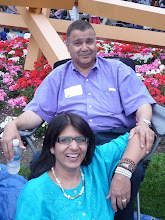

On the road to village Zrze, the monastery is seen folded into the side of the mountain. The picture below is from a brochure simply because it occurred to me that it would be so much fun to climb up the hill behind the monastery looking down and someone had already had the same thought!
My best days are usually linked to a spontaneous decision. Walking back from work on Friday, wondering what was the best thing to do on a forecasted warm sunny Saturday, I impulsively invited two of my fellow volunteers to join me for a visit to a monastery built near the village of Zrze about 30 km from my home. This site was chosen by monks as early as the 4th century, high above the Pelagonia plains on the western ring of mountains, which form the eastern mountains of my municipality.
Only Candy Wiggum was free, so around 10:30 am right after the sun had burned the low fog that settles into the M. Brod valley in fall and spring, we walked over and invited my Macedonian friend Cena to join us. She was not available, so we took a taxi, knowing full well that the track to the monastery from the village of Zrze at the bottom of the hill is designed more for a 4x4 and not a car. Well we were in no hurry, so we negotiated that the taxi will wait 3 hours for us to allow enough time for us to climb up and back and spend quality time at the monastery.
Ahh, it was a magical sight when we first spotted the monastery in the distance and not only were we eager to scale the cliff, so was our taxi driver – whose Aunt, as it turns out was a resident of the village and our driver – Smiler had last visited the monastery 30 years ago! Expecting him to stop the car and inform us that he could go no further, we held our breath as he slowly went up the steep, twisted road with deep gulley’s from water run off. Higher and higher he went and at one point we asked him to stop to allow us to take some pictures, when it finally dawned on us that he wanted to go there too and his Peugeot would make it! The pictures speak for themselves, so I will give a brief historical recap.
 Though the early 4th century monks lived in the caves, by the 5th century a church and a citadel were built housing a vibrant community - the ruins of basilica are currently under excavation and restoration and lie a little to the north of the current church. The site of the current basilica was built in the 9th century, with additions in the 14th when it was turned into a male coenobitic* monastery and the church dedicated to the Holy Transfiguration of Christ. Many 14th century murals were restored in the 17th century and for a period of time during communism, it became the home of two nuns, Matushka Irina (1891-1962), a noblewoman and escapee from the Bolshevik revolution and her companion, who died in 1975. In 1998 it was re-established as a monastic community with male monks.
Though the early 4th century monks lived in the caves, by the 5th century a church and a citadel were built housing a vibrant community - the ruins of basilica are currently under excavation and restoration and lie a little to the north of the current church. The site of the current basilica was built in the 9th century, with additions in the 14th when it was turned into a male coenobitic* monastery and the church dedicated to the Holy Transfiguration of Christ. Many 14th century murals were restored in the 17th century and for a period of time during communism, it became the home of two nuns, Matushka Irina (1891-1962), a noblewoman and escapee from the Bolshevik revolution and her companion, who died in 1975. In 1998 it was re-established as a monastic community with male monks.
* In the dictionary of the Coptic Orthodox Church, coenobitic monasticism is defined as a type of monasticism established by Abba Bakhomious, Father of the Community, in the third century, where monks or nuns live a communal life in a monastery or convent.











No comments:
Post a Comment